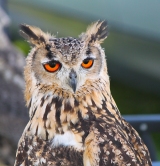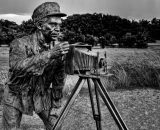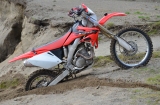- Forum
- General Discussion | Introductions | Off Topic Forum
- Photography General Discussion
- RAW vs Jpeg (All in one thread)
RAW vs Jpeg (All in one thread)
-

- KCook
- Photo Elder
-
- Canon EOS 50D and Olympus E-P5
- Followers: 1325
- Posts: 5410
-
Points:
32913
-

- Stealthy Ninja
- Moderator
-
- Fuji X stuff and a 1DsIII for some reason
- Followers: 982
- Posts: 16300
-
Points:
6837
Post #162050
KCook wrote: And the JPG is only half cooked. You can still edit a JPG, just not so effectively as RAW.
Yeh get the white balance more than a little bit wrong and you're screwed.
-

- Trilby
- Has the Hang of it
-
- Nikon D300s
- Followers: 12
- Posts: 62
-
Points:
0
Post #174462
There is no black & white; it's all 18% grey.
-

- dansudbury
- New Kid On The Block
- Canon 30D and 7D
- Followers: 26
- Posts: 17
-
Points:
411
Post #174566
"It is not the equipment but the person behind the camera that create the photo"
-

- Stealthy Ninja
- Moderator
-
- Fuji X stuff and a 1DsIII for some reason
- Followers: 982
- Posts: 16300
-
Points:
6837
Post #174607
dansudbury wrote: Raw is a "Digital" negative that provide very positive tools to make GREAT photos!!! I had been using films for many years and I like to compare Raw photo to the old negative and Photoshop as my darkroom... Full light, no mess, no chemical... Heaven!!!
Yes I agree.
-

- johns1947
- New Kid On The Block
-
- Canon EOS 50D
- Followers: 28
- Posts: 27
-
Points:
0
Post #193197
Like most free advice, I don’t think a whole lot of it ‘sticks’.
The human race is a strange group.
We don’t know,.. what we ‘don’t know’.
On the subject of Raw vs Jpeg.
Fact
Jpeg is a COMPRESSION routine.
It’s the most uniformly accepted, but understand.
The FILE IS COMPRESSED AND COMPROMISED from it’s ‘original’.
Hmmm, ‘original’
"I have a ‘point and shoot’, the jpeg is all it gives me,.. how can you say it’s not the ‘original’??"
Because the ‘original’ raw was flushed as soon as the jpeg was generated.
Only better cameras give you access to, and the ability to work with, the raw file.
Many of these better camera’s allow you to save jpeg, raw, or both at the same time.
Understand,.. the camera SHOOTS raw,.saves the raw, and converts to jpeg on the fly.
If you truly enjoy spending the maximum money on mediocre pictures, might I suggest hooking your camera to your printer directly with pict-bridge? ? ?
You won’t have to trouble yourself with any of the silly ‘tweaking’ everybody has been complaining about.
If you goal is to embrace ‘easy’ and avoid ‘excellence’,.. THAT’S the way to go.
I have a Canon. I am familiar with their ‘system’ and that’s what I’m going to use for illustration.
Canon has several free software routines they bundle with their camera’s that (imho) are excellent and easy to use. They also have free ‘classes’ to assist learning to use the cameras and software at Canon Image Gateway: www.cig.usa.canon.com Tips on things like getting White Balance, adjusting highlights, how to understand and use the histograms, etc.
If you want QUALITY,.. Learn to work with raw.
When you work in Raw, you need to evaluate your shots on the computer.
Adjust min and max. (as needed)
Adjust overall exposure (as needed)
Adjust white balance. (as needed)
Adjust sharpness. (as needed)
Adjust for noise reduction (again,… as needed)
(experience is the key to the ,..."as needed" part,.. sorry, no shortcut)
These adjustments ARE NOT APPLIED TO YOUR SHOTS,… they’re stored in a ‘recipe’ which are THEN applied to your shots. (think OVERLAY)
When you ‘open’ your picture, the effects are the same, but Raw files are NEVER modified.
If you have image files that are needed for a Court case, Raw files are the only files admissible in court.
THEY ARE UNTAMPERABLE.
It’s very quick, and easy to apply all the modifications you need to get the best ‘enhancement’s to your file in raw,…
Once you’ve done that, Convert (to jpeg, tiff, etc) and save. You’ll get a lot more precise corrections this way. (by the way, you can’t print Raw files directly, you have to convert to jpeg first)
When you convert to jpeg or tiff FIRST,… corrections are still possible,.. BUT,.
They’re more difficult to make, less precise, and you degrade the quality of the file.
Each modification to the jpeg file takes it’s toll.
You get further and further from the original. And there’s no going back, unless you store duplicates.
If you think things are confusing NOW,.. wait till you’ve got multiple sets of ‘backup’s.
Once you’ve established a ‘recipe’ for a shot, it only takes three or four mouse clicks to apply it to this entire ‘batch’ of shots. If the batch is 200-400 shots, it makes your life a lot easier.
Canon is very helpful and instructive.
I don’t know how well Nikon explains these issues,.. I’m somewhat underwhelmed with Ken Rockwell.
-

- Henry Peach
- Apprentice
-
- I currently use a 5DII or Sony Nex-3 most of the time.
- Followers: 50
- Posts: 2925
-
Points:
16
Post #195299
-

- Darrell
- Apprentice
-
- Nikon D7000 & D70
- Followers: 27
- Posts: 2059
-
Points:
0
Post #219476
You will not be judged as a photographer by the pictures you take, but by the pictures you show.
-

- Squibble
- The Lounger
-
- Canon eos 500d
- Followers: 38
- Posts: 1337
-
Points:
0
Post #233599
-

- Gallery 59 Photography
- New Kid On The Block
-
- Nikon D3s
- Followers: 5
- Posts: 15
-
Points:
0
Post #237475
-

- McBeth Photography
- Photo Guru
-
- Sinar Norma 4x5
- Followers: 365
- Posts: 3870
-
Points:
1295
Post #246730
It is what it is.
-

- Henry Peach
- Apprentice
-
- I currently use a 5DII or Sony Nex-3 most of the time.
- Followers: 50
- Posts: 2925
-
Points:
16
Post #261774
dpbestflow.org/camera/raw-vs-rendered
-

- rickymiller
- Newbie
-
- canon
- Followers: 0
- Posts: 1
-
Points:
0
Post #272682
-

- Jelinekjava415
- Newbie
-
- Nikon D5100
- Followers: 0
- Posts: 7
-
Points:
0
Post #275165
- Forum
- General Discussion | Introductions | Off Topic Forum
- Photography General Discussion
- RAW vs Jpeg (All in one thread)
Latest Reviews
The Canon EOS R100 is an entry-level mirrorless camera introduced in 2023. But just because it’s an entry-level camera doesn’t mean it’s a bare-bones camera. Find out why in this review!
Nikon’s retro-looking Nikon Zfc is anything but retro. Under its classic body is a host of features and amenities that make it a worthwhile compact mirrorless camera for 2024.
The Canon EOS R50 is one of the newest R-system cameras from Canon. Is it worth your money? Find out all the details you need to know in this comprehensive review.
The Sony FE 70-200mm f/2.8 GM OSS II is Sony’s flagship mirrorless zoom lens. As such, it’s loaded with features and has a top-shelf build quality that makes it a top pick!
Latest Articles
Using leading lines in photography helps improve the composition by drawing viewers in and leading their eye from the foreground to the background. Explore some fine examples of this in this guide!
The Insta360 has one of the best lineups of action cams and 360-degree cameras. With these Insta360 accessories, you can elevate your photography and videography game!
Creating impactful photos of landscapes depends on many factors, not the least of which is your talent behind the lens. This guide explores other elements required for the best product.
The Canon EOS R100 is an entry-level mirrorless camera introduced in 2023. But just because it’s an entry-level camera doesn’t mean it’s a bare-bones camera. Find out why in this review!
Are you ready to upgrade your camera? Before buying new, you might consider the value of purchasing used gear to save money.
The Olympus OM-D E-M10 Mark IV is a micro four thirds camera released in 2020. It’s an entry-level system along with the OM-D E-M5 Mark III. Use this guide to determine which one is best for you!
Blue hour photography might not be as well known as golden hour photography, but it is every bit as good a time to create epic images of landscapes. Learn how in this quick tutorial!
Nikon’s retro-looking Nikon Zfc is anything but retro. Under its classic body is a host of features and amenities that make it a worthwhile compact mirrorless camera for 2024.




















